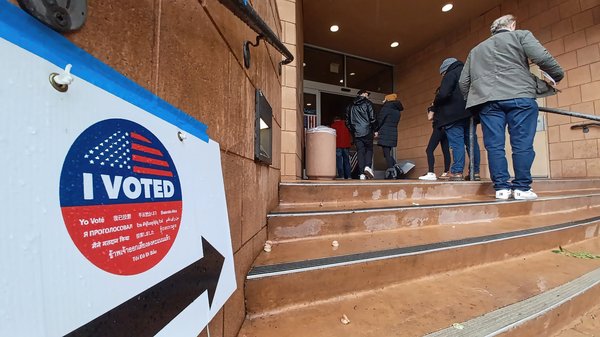Our Terms & Conditions | Our Privacy Policy
Why do election results take so long?
Why does it seem to be taking longer to finalize election results, even with new voting technology?
We’ve seen an evolution of procedures and technologies, mostly aimed and expanding the franchise—providing more and better opportunities for people to register to vote and express their opinions on Election Day. But as we continue to see an evolution of technology, procedures, and administrative practices, we’re also going to see some challenges. Remember that we’re talking about a very complicated process.
One of the things we’ve come to appreciate in our research with the Voting Technology Project is just how much goes on behind the scenes to get people registered to vote; to verify and record their registration information; and then to provide voters the opportunity to securely, and in an accessible and simple manner, cast their ballots.
Once you vote, your ballot will likely end up in a securely sealed ballot box. When polls close, election officials at the polling place or vote center will break those seals and conduct an initial examination to reconcile all the ballot materials they’ve received. The ballots will then be securely transported to a central location. Some will go by car. Some may be delivered by law enforcement. Some, if they are coming from a remote location, may go by helicopter.
Many of those ballots are tabulated immediately. If you voted in person on Election Day or earlier, your vote is probably going to be tabulated that night or early the next day.
However, mail-in ballots that arrive later, or ballots that are cast provisionally on Election Day will take longer to count. Staff at the election office will confirm whether the voter is registered in their jurisdiction and that they haven’t cast another ballot elsewhere. If those conditions are met, the ballot will be included. If those conditions aren’t met, officials will investigate further.
That’s one of the reasons it takes so much time. Election officials, especially here in California, are committed to making sure that all the ballots that are eligible to be counted are, in fact, counted.
In a related phenomenon, known as “blue shift,” it has become increasingly common for vote totals to shift in favor Democratic candidates after polls close. This is, in part, because Democratic-leaning voters are more likely than Republicans to cast late-arriving votes by mail and to cast provisional ballots.
It is not unusual to see final results change, sometimes significantly, as legitimate ballots continue to be counted after Election Night.
—R. Michael Alvarez, Flintridge Foundation Professor of Political and Computational Social Science
Images are for reference only.Images and contents gathered automatic from google or 3rd party sources.All rights on the images and contents are with their legal original owners.



Comments are closed.